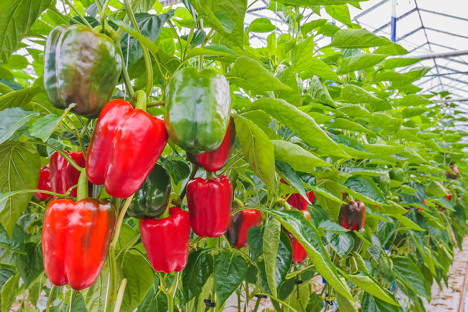 GE Current, a Daintree company, is offering open access to the findings of its most recent research collaboration. The study, conducted by Wageningen University & Research (WUR), is the first major scientific investigation into the impact of intra-canopy lighting (ICL) on the quality and volume of vine tomato yields. The findings of this research, which also saw the first use of Current’s new Arize Integral ICL fixture, offer growers of high-wire crops such as tomatoes, cucumbers, and bell peppers new options to significantly boost yields without increasing energy consumption or monthly bills.
GE Current, a Daintree company, is offering open access to the findings of its most recent research collaboration. The study, conducted by Wageningen University & Research (WUR), is the first major scientific investigation into the impact of intra-canopy lighting (ICL) on the quality and volume of vine tomato yields. The findings of this research, which also saw the first use of Current’s new Arize Integral ICL fixture, offer growers of high-wire crops such as tomatoes, cucumbers, and bell peppers new options to significantly boost yields without increasing energy consumption or monthly bills.
Published in the form of an easily digestible booklet designed to answer growers’ key questions, the study found that by delivering 34% of the daily light integral (DLI) to mature leaves deep within the canopy, and 66% from top lighting (TL), two of the most common tomato cultivars produced an average of 14% more fruit than those with 100% top lighting. There was also no impact on quality or taste, with the harvested fruit receiving similar Brix scores for sugar content and also recording similar levels of acidity to the fruit grown under 100% TL.
“With global energy prices continuing to rise and the added pressures of needing to maintain ever-increasing food supplies, growers are looking for any advantage to help them increase production without incurring additional operating costs or sacrificing quality,” says Malcolm Yare, Customer Success Director – Horticulture at Current. “For some growers, intra-canopy lighting could be exactly what they need to maximize their crops’ potential and secure the future of their business.”
The WUR study also saw the first deployment of Current’s new Arize Integral ICL fixture, which directs an optimized light spectrum across a wide, 120-degree angle from both sides of the fixture. Offering a lighting output of up to 346 µmol/s and an efficiency of 3.5 µmol/J, the Integral has been designed to deliver high light intensity with low energy consumption, allowing it to integrate seamlessly into existing installations and deliver significant gains.
“We are currently discussing further potential collaboration with Wageningen University & Research to determine the most productive division of light energy between LED top lights and intra-canopy lighting,” says Dr. Hans Spalholz, Horticulture Scientist at Current. “For now, the results at 34% ICL are extremely encouraging, and we would certainly recommend that growers of high-wire crops like tomatoes or cucumbers consider applying a high proportion of supplemental light through intra-canopy lighting to maximize returns.”

Dutch horticulture has been the poster child of global innovation in a...

Agricultural researchers from the UPCT have created a portable prototy...
Increased production in winter without detracting from the flavor and ...